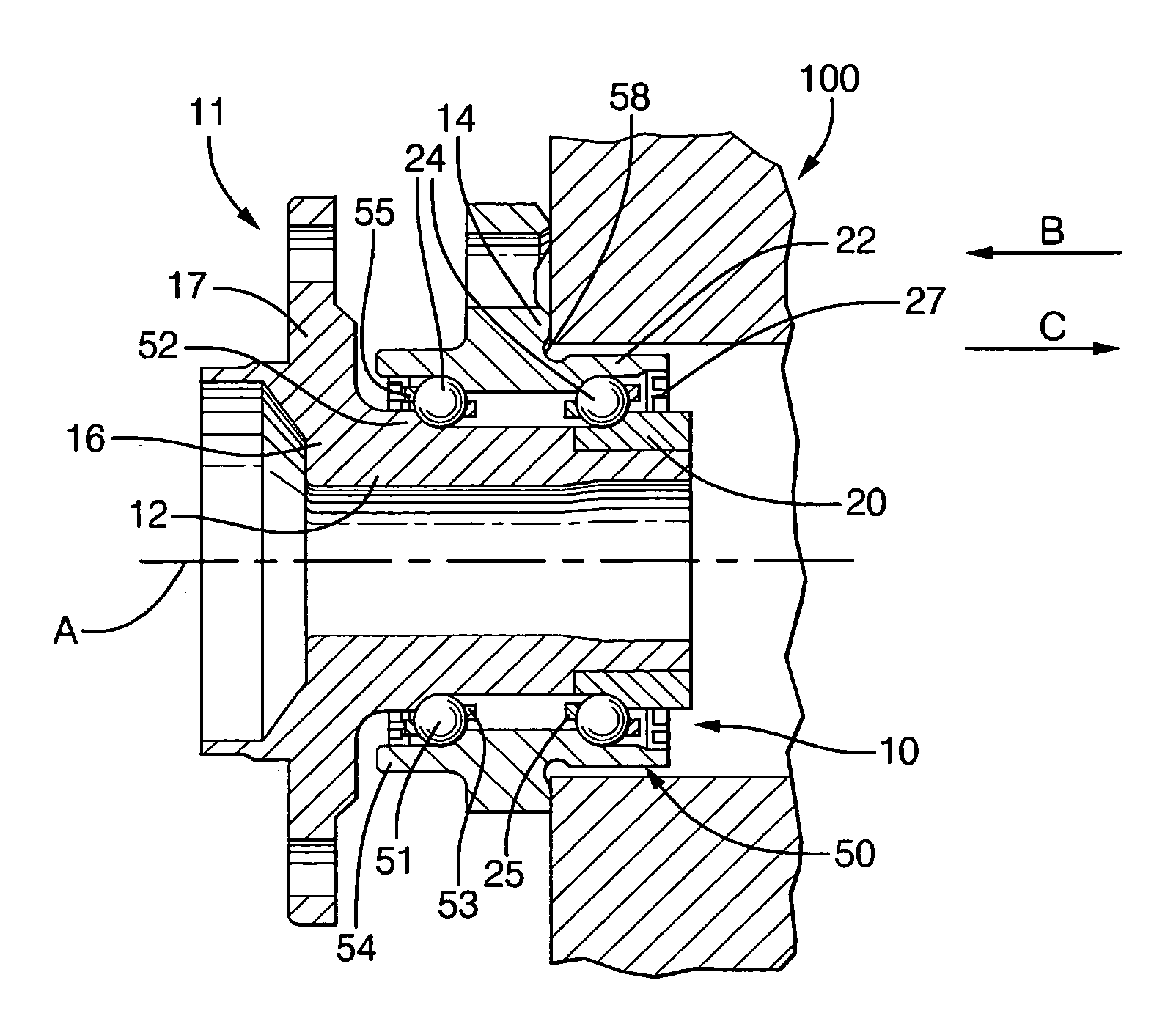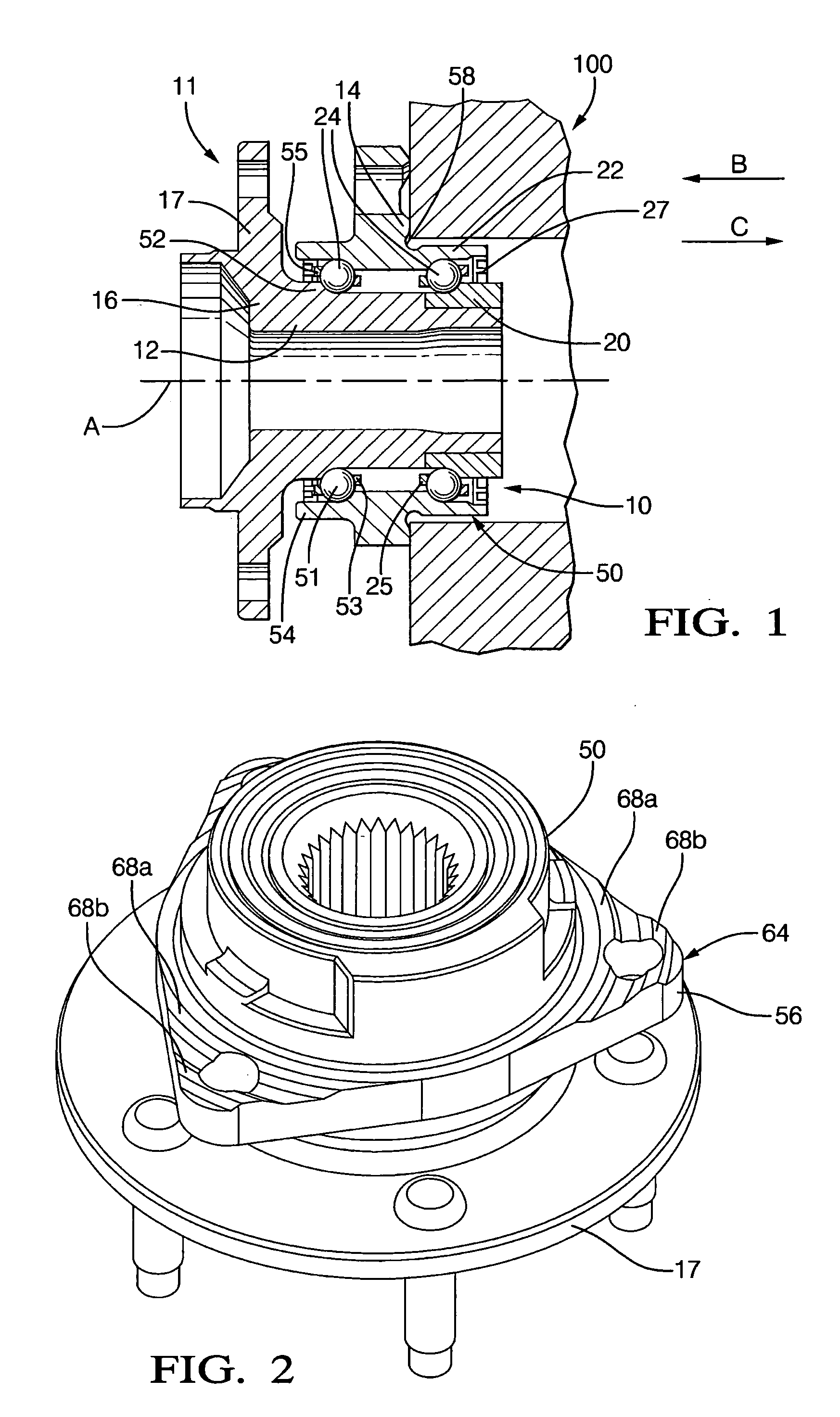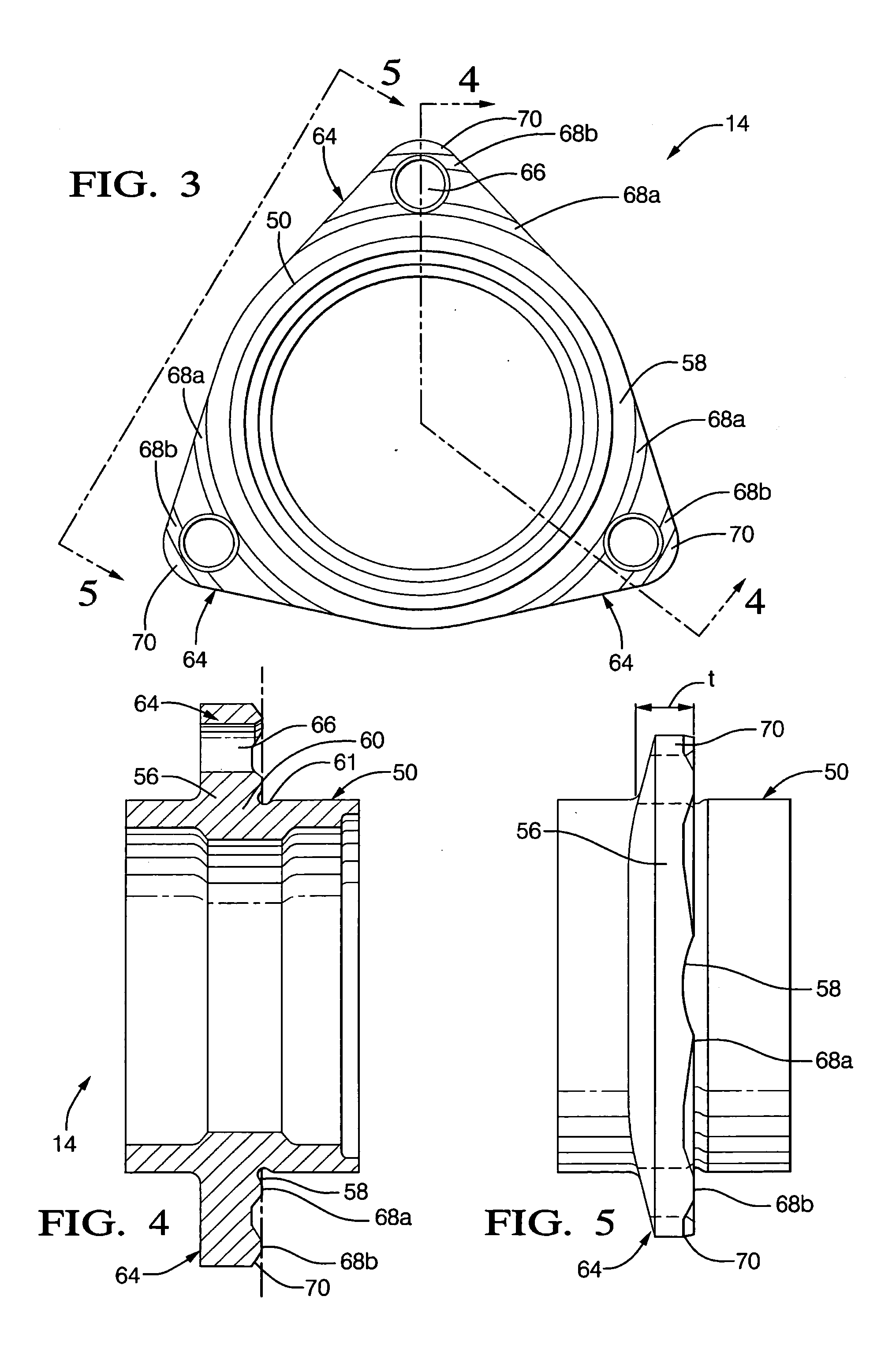Wheel bearing assembly mount with force attenuation
a technology of force attenuation and bearing assembly, which is applied in the direction of mechanical equipment, rigid support of bearing units, transportation and packaging, etc., can solve the problems of increasing the mass, weight and cost of bearing components, increasing the weight of bearing components, and increasing the risk of damage to the bearing assembly of the vehicle. , to achieve the effect of reducing the stress concentration, and reducing the contact area
- Summary
- Abstract
- Description
- Claims
- Application Information
AI Technical Summary
Benefits of technology
Problems solved by technology
Method used
Image
Examples
Embodiment Construction
[0014] A wheel bearing assembly 10 is shown in FIG. 1 for supporting a wheel (not shown) in a wheel assembly 11. A spindle 12 defines a rotational axis A, and a support member 14 supports the spindle 12. Support member 14 may be secured to a portion 100 of the vehicle by fasteners or the like. A wheel hub 16 has a flange 17 for securing the wheel thereto and is supported on spindle 12 adjacent support member 14. In the embodiment shown in FIG. 1, wheel hub 16 is integrally formed with spindle 12. Wheel hub 16 and spindle 12 are rotatable about rotational axis A. A drive mechanism (not shown) is coupled to spindle 12 for rotationally driving the wheel. Bearing assembly 10 is arranged to permit wheel hub 16 and spindle 12 to rotate relative to support member 14, with support member 14 rotatably supporting spindle 12. For purposes of the present invention, spindle 12 is “rotatably supported” by support member 14 when the spindle is supported so as to permit rotation of the spindle.
[00...
PUM
 Login to View More
Login to View More Abstract
Description
Claims
Application Information
 Login to View More
Login to View More - R&D
- Intellectual Property
- Life Sciences
- Materials
- Tech Scout
- Unparalleled Data Quality
- Higher Quality Content
- 60% Fewer Hallucinations
Browse by: Latest US Patents, China's latest patents, Technical Efficacy Thesaurus, Application Domain, Technology Topic, Popular Technical Reports.
© 2025 PatSnap. All rights reserved.Legal|Privacy policy|Modern Slavery Act Transparency Statement|Sitemap|About US| Contact US: help@patsnap.com



